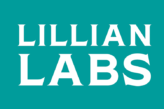Like many industries, the COVID pandemic fundamentally impacted how business was conducted for those of us in the qualitative research field. Mostly out of necessity, we’ve been conducting remote, in-depth interviews (IDIs) and focus groups with consumers in their homes instead of in a research facility. Now, 2+ years into this “new normal,” and with in-person research finally beginning to open up again, it’s interesting to assess the unexpected benefits we’ve seen doing all our qual online, and how, moving forward, we may be better off for it.
Here are some of the benefits I’ve experienced:
GETTING A FEEL FOR THE HOME LIFE: Virtual interviews and group sessions have given me the opportunity to interact with consumers in the comfort (or sometime the chaos) of their homes. Getting a glimpse of their home life can offer important clues about their values, priorities, preferences and style, and adds context that can help provide a more focused picture of their world.
SHOW ME > TELL ME: Some people are just naturally more comfortable showing how they do something versus telling how they do it. In the virtual world, when I recognize someone is struggling explaining their challenges in performing a particular task, I have the option to ask them to demonstrate their actual experience. I’ve learned things about how a product is used that I never would’ve in an interview alone.
MAKING A PERSONAL CONNECTION: I find that consumers that participate in my interviews and group discussions feel more at ease and are generally more open to sharing their candid thoughts and feelings when we can relate more like people just talking versus something more formal. With virtual interviews, it’s really helped break the ice and get my interviewees to open up by sharing a few personal photos in my background or introducing my cat who likes to come on camera (the big show off!).
RESPONDENT ACCESSIBILITY: It’s easy to assume that in-facility respondents fully represent our consumer targets. But running qualitative groups in the virtual world has further opened my research to a new type of consumer target that never would attend a facility—those that are simply too busy, or don’t have transportation, or don’t have childcare. Eliminating the barrier of having to appear in-person at a facility opens your pool of available respondents, even bringing in fresh, qualitative “newbies”.
REDUCED TIME COMMITMENT/INCENTIVE COST: Another benefit of conducting interviews where consumers never have to leave their homes is it requires no additional time for travel or checking in early. So, less of a time commitment, which also can reduce the incentive amount required to attract respondents.
SCHEDULE RELIABILITY: Bad weather, traffic congestion and other factors can impact show rates and schedules when consumers have to travel to get to a facility. There’s also risks of travel delays, cancelled flights, etc. for the moderator and clients. With in-home research, these stresses and potential costs are no longer at play.
SAVINGS ON TRAVEL/INCIDENTALS COSTS: Travel budgets for the moderator and clients are no longer a consideration, and projects costs don’t need to include food or parking for respondents.
While these benefits are notable, as we move past the pandemic, and traveling and gathering gets back to normal, we, in the qualitative research community, will still rely on in-person research. But the benefits, both expected and unexpected, that we’ve realized by having to adapt to an exclusively remote research model have expanded our options and given clients more flexibility in how we conduct their research.


